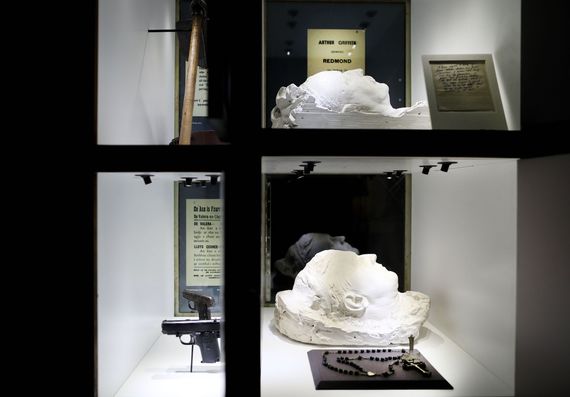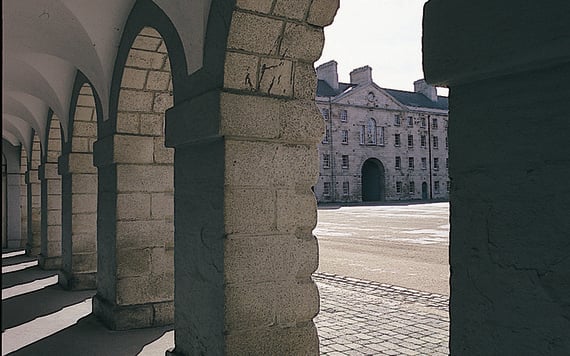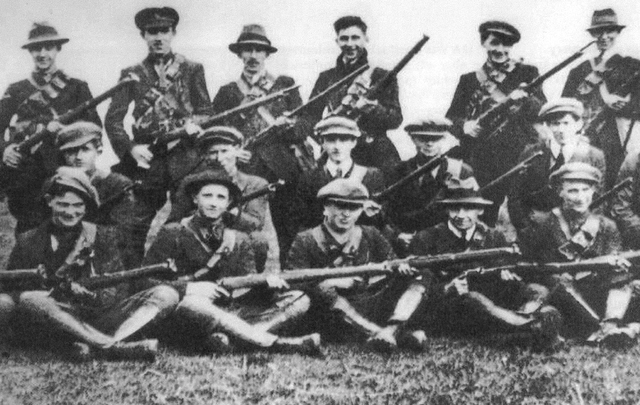An IRA intelligence file from the War of Independence was the most noteworthy addition to the National Museum of Ireland's Irish wars exhibit as it marked the 100th anniversary of the conflict.
In total, more than 50 new artifacts, graphics, and audiovisual elements were added to the Irish Wars 1919-1923 exhibit at the museum, located at Collins' Barracks in Dublin.
The exhibition is part of the museum's 'Soldiers and Chiefs' exhibit and is being completely reimagined to mark the centenary of the War of Independence and the Irish Civil War.
The newly-added IRA dossier, which has never been put on public display before, contains details about British forces at Dublin Castle and in other parts of the country.
Some of the British officials listed in the documents were later assassinated by the IRA.
The intelligence file has been digitized and is on loan thanks to a private family donation.

Newly added death masks at the National Museum of Ireland.
Also on a temporary display, thanks to a private donation, is hair shorn from a woman in a 'bobbing.'
Bobbing was a form of punishment that involved shearing a woman's hair and the remnants of this particular bobbing were found on the person of IRA member Michael Barry when he was arrested in 1920.
Among the most prominent additions to the museum are the death masks of Irish revolutionaries Michael Collins, Cathal Brugha and Arthur Griffith, as well as the mask of Terence MacSwiney, the Lord Mayor of Cork who died after a hunger strike in 1920.
None of the masks have been on display for over 15 years.
A note written by Griffith after he signed the Anglo-Irish treaty in 1921 was also added to the exhibition as well as instruments used by the IRA in various jailbreaks, experimental IRA weapons and the propeller of a British plane destroyed by Irish fighters over Tipperary in 1921.

Collins Barracks where the new exhibition is housed.
The National Museum of Ireland has also added several new themes to the exhibition to increase public understanding of the complex era of Irish history. Hunger strikes, women in warfare and propaganda some of the new themes included in the exhibition.
The new additions supplement an exhibition already full to the brim with historical artifacts, including an extensive collection of newsreel footage
Catherine Heaney, Chair of the National Museum of Ireland, said: “As a National Cultural Institution, the Museum’s role in the Decade of Centenaries is to explore important themes and elements of the centenaries through the objects and material heritage in our collection."
The new additions to the exhibition were unveiled on Tuesday night.




Comments